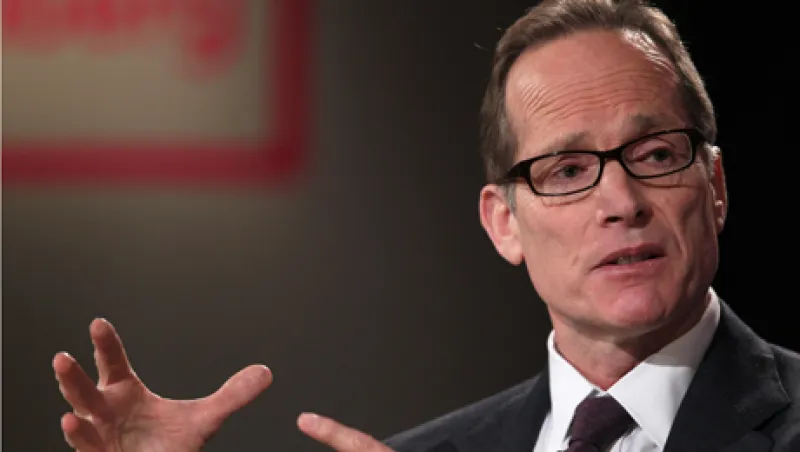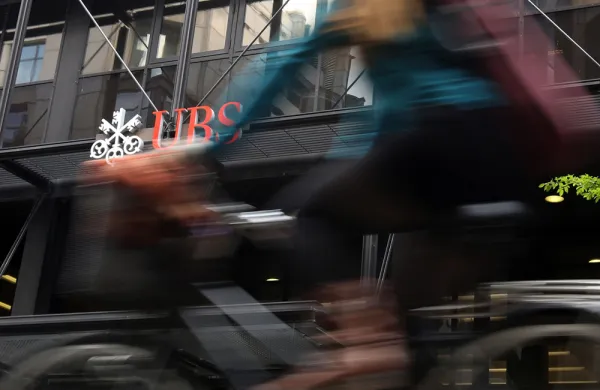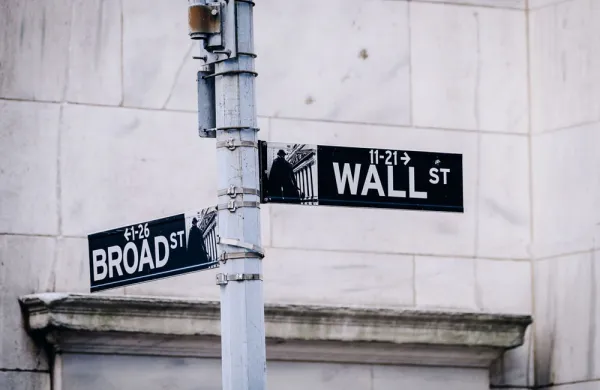Exchange traded funds (ETFs) continue to be a favored way for many of the largest, savviest and best-known hedge fund firms to bet on the direction of the overall market or a basket of stocks in an individual industry or market.
In fact, in the third quarter ETFs represented the largest holding or largest new purchase by a number of hedge funds.
ETFs offer investors an efficient and low-cost way to make a market bet or to hedge a portfolio. They can also skew the movement of the underlying stocks, which can experience a bigger move up or down than they may otherwise experience had they not been included in the basket of stocks.
Among the more aggressive users of these instruments is Louis Bacon’s Moore Capital. At the end of the third quarter, its three largest — and newest — holdings were ETFs separately containing stocks of consumer staples, utilities, and dividend stocks. Moore also had sizable stakes in ETFs that track the movement of telecom stocks as well as gold miners.
The hedge fund firm also uses options to hedge these positions. For example, at the end of the third quarter it had call options on ETFs that track financial stocks and German stocks.
In addition, Moore had a sizable amount of put options on an ETF that tracks the movement on the S&P 500 Index, offset somewhat by call options on the same ETF. It also had a large amount of call options on an ETF that tracks the movement of 25 Chinese stocks, offset by a much smaller put exposure on the same basket of stocks.
ETFs also accounted for five of the six largest holdings of Jeff Vinik of Vinik Asset Management, the one-time Fidelity money manager. They include the SPDR’s that track the movement of the S&P 500, with a better than $1 billion bet, making him the second largest new investor in the stock. IShares tracking the movement of the Russell 2000 and PowerShares QQQ, which tracks the Nasdaq-100 Index, were his second and fourth largest holdings — as well as largest new purchases — at the end of the third quarter. These three ETFs alone accounted for more than one-quarter of Vinik’s U.S. equity portfolio at the end of the quarter.
Another big buyer of the QQQ basket was Coatue Management, founded by Tiger Cub Philippe Laffont, who bought roughly $150 million worth of the ETF.
The largest new purchaser of the SPDR S&P 500 ETF was Highbridge Capital, the hedge fund headed up by co-founder Glenn Dubin and owned by JPMorgan Chase. It took a $1.76 billion stake in the ETF in the third quarter, making it the hedge fund firm’s third largest holding overall.
Other major buyers of the S&P 500 basket by quarter-end included Eric Mindich’s Eton Park Capital Management.
Eton Park also bought a large stake in call options on SPDR Gold Trust — a bet on the price of gold. At the same time, he hedged with a much smaller exposure to put options on the ETF. He also cleared out his entire 813,000-share position in the common stock of the ETF.
Jamie Dinan’s York Capital unloaded its entire stake of nearly one million shares of the Trust.
However, the biggest selling of SPDR Gold Trust in the third quarter was by John Paulson, who had made a legendary big bet on gold over the past few years. He sold roughly 11 million of his position in the ETF. But it still left him with more than 20 million shares worth more than $3.4 billion, easily remaining the largest holder in the ETF.
Paul Tudor Jones II’s Tudor Investment counts the SPDR Gold Trust as its second largest holding. Its largest holding, however, were the IShares that track the MSCI Japan index.
Tudor also had a large put position in the AMEX Maket Vectors Gold Miners Index, offset by call options valued at slightly more than half the puts. It also had call options on the AMEX Materials Select Sector ETF.
In addition, Tudor had call options on the iShares FTSE China 25 Index Fund at the same time it sold one million shares of the common stock of the ETF.
On the other hand, Richard Perry, founder of Perry Capital did not own any shares of ETFs at the end of the third quarter. However, he had a better-than $1 billion in puts on the iShares that track the Russell 2000, worth nearly half the total value of his $2.4 billion U.S. equity portfolio. He also had a very small call option bet on the same index.







